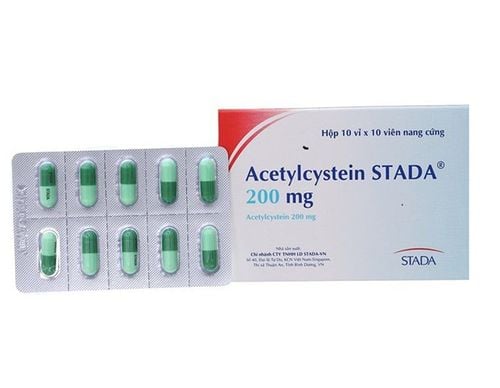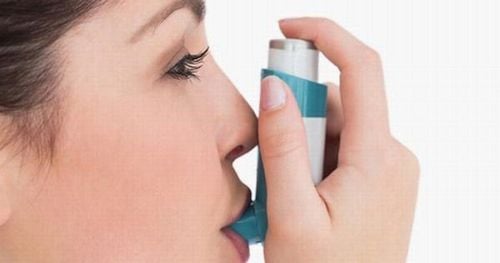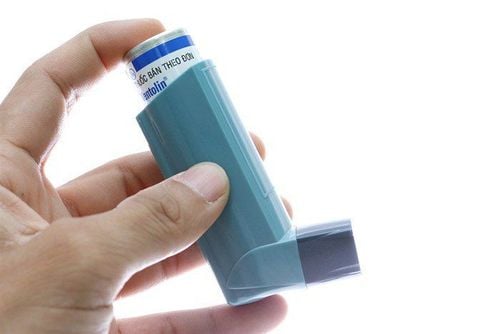This is an automatically translated article.
The article was professionally consulted by Dr. Phan Dinh Thuy Tien - General Internal Medicine - Department of Medical Examination & Internal Medicine - Vinmec Nha Trang International General Hospital.Occupational asthma is caused by exposure to triggers in the workplace. After being exposed to irritants such as smoke, dust, chemicals... in the working environment, the patient will not have an asthma attack that may be acute or the asthma attack will be aggravated, making it difficult to treat. . Therefore, occupational asthma that is not correctly diagnosed and treated in time can cause permanent lung damage, disability or death.
1. Occupational bronchial asthma
Occupational bronchial asthma is asthma caused by breathing in chemical fumes, gases, dust, or other substances at work. Occupational asthma can result from exposure to a sensitizing substance - triggering an allergic or immune reaction - or to an irritating toxic substance.Like other types of asthma, occupational asthma can cause chest tightness, wheezing, and shortness of breath. People with allergies or with a family history of allergies are more likely to develop occupational asthma.
2. Symptoms
Occupational asthma symptoms are similar to those caused by other types of asthma. Signs and symptoms include:Wheezing, sometimes only at night. Cough. Shortness of breath. Chest tightness. Other accompanying signs and symptoms may include:
Runny nose. Stuffy nose. Eye irritation and tearing. Occupational asthma symptoms depend on the substance exposed, the duration and frequency of exposure, and other factors. Symptoms may:
Get worse as the disease progresses during the work week, the illness goes away temporarily during weekends and vacations and recurs when returning to work. Occurs both at work and away from work. Begin immediately upon exposure to an asthma-causing substance at work or only after a period of frequent exposure to the substance. Continue after exposure is stopped. The longer you are exposed to an asthma trigger, the more likely you are to develop chronic bronchial symptoms.

Ho, khó thở kèm theo tức ngực là các triệu chứng của hen phế quản nghề nghiệp
3. Cause
More than 250 substances in the workplace have been identified as possible causes of occupational asthma. These include:Animal substances, such as proteins found in scales, hair, fur, saliva and body waste. Chemicals are used to make paints, varnishes, adhesives, laminates and solder resins. Other examples include chemicals used to make insulation, packaging materials, foam mattresses and upholstery. Enzymes are used in detergents and powder conditioners. Metals, especially platinum, chromium and nickel sulfate. The phytochemicals include proteins found in natural rubber latex, flour, cereals, cotton, flaxseed, hemp, rye, wheat, and papain, a digestive enzyme derived from plant foods. papaya. Respiratory irritants, such as chlorine gas, sulfur dioxide, and smoke. Asthma symptoms begin when the lungs become irritated (inflamed). Inflammation causes a number of responses that restrict the airways, making breathing difficult. With occupational asthma, pneumonia can be triggered by an allergic reaction to a substance, which often develops over time. Additionally, inhaling smoke from a lung irritant, such as chlorine, can trigger immediate asthma symptoms in the absence of allergies.
4. Risk factors
The intensity of exposure increases the risk of occupational asthma. In addition to these risks are increased if:Have allergies or asthma . Allergies or family history of bronchial asthma. Parents can pass on asthma to their children. Work around asthma triggers. Several substances are known to be lung irritants and asthma triggers. Smoke. Smoking increases the risk of asthma if you are also exposed to certain other types of irritants. Occupations with high risk of asthma
It is possible to develop occupational asthma in almost any workplace. But the risk is higher if working in certain occupations. Some of the most dangerous jobs and the asthma triggers associated with them include:
| Nghề nghiệp | Các chất gây hen phế quản |
| Xử lý chất kết dính | Hoá chất |
| Xử lý động vật, bác sĩ thú y | Protein động vật |
| Thợ làm bánh, công nhân máy xay, nông dân | Ngũ cốc |
| Nhà sản xuất thảm | Nhựa cây |
| Công nhân cơ khí | Coban, Niken |
| Công nhân sản xuất thực phẩm | Bột sữa, bột trứng |
| Kiểm lâm, thợ mộc | Bụi gỗ |
| Thợ làm tóc | Thuốc nhuộm |
| Nhân viên y tế | Mủ cao su, hoá chất |
| Dược sĩ | Thuốc, enzyme |
| Thợ xây, thợ sơn | Hoá chất |
5. Treatment
Avoiding substances that trigger occupational asthma symptoms is important. However, becoming sensitive to a substance or small amount can cause immediate asthma symptoms even when a mask or respirator is used. The goal of treatment is to prevent symptoms and stop an asthma attack from progressing.In the case of using drugs to treat patients, and doctors need to pay attention to age, symptoms, occupational asthma triggers in order to use drugs to best control asthma attacks. Medications include:
Long-term control drugs
Inhaled corticosteroids. Inhaled corticosteroids reduce inflammation and have a relatively low risk of side effects. Leukotriene regulation. These regulating drugs are alternatives to corticosteroids. Long-acting beta-agonist (LABA). LABA clears the airways and reduces inflammation. For asthma, a LABA should usually only be taken in combination with an inhaled corticosteroid medication. Combination inhaler. These medications contain LABAs and corticosteroids. Rapid-acting, short-acting drugs
Short-acting beta-agonists. These medications relieve symptoms during an asthma attack. Oral and intravenous corticosteroids. Medicines that reduce airway inflammation for severe asthma. In the long run, they cause serious side effects. If your bronchodilator inhaler needs to be used more often than recommended by your doctor, a follow-up visit with a pulmonologist is recommended to adjust your long-term controller medication. Also, if bronchial asthma is triggered or made worse by allergies. Treatments for allergies include desensitization, anti-allergy medications, nasal sprays, and decongestants.

Điều trị hen phế quản nghề nghiệp bằng thuốc
6. Complications
The longer you are exposed to an occupational asthma trigger, the worse your symptoms may be, and that means the longer it will take for them to improve once the exposure is over. prefer. In some cases, exposure to airborne asthma triggers can cause permanent lung changes, leading to disability or death.7. Prevention
The best way to prevent occupational asthma is for workplaces to control workers' exposure to chemicals and other substances that can be sensitizers or respiratory irritants. Such measures could include implementing better control methods to prevent exposure, using less hazardous substances, and providing personal protective equipment (PPE) to workers.Although medication can be relied on to relieve symptoms and control the inflammation associated with occupational asthma, there are things that can be done to maintain overall health and reduce the likelihood of inflammation infection:
Quit smoking. Not smoking can help prevent or relieve occupational asthma symptoms. Influenza and pneumococcal vaccination. This can help prevent illness. Avoid nonsteroidal anti-inflammatory drugs (NSAIDS) and other medications that can make symptoms worse. Weight loss. For people who are obese, losing weight can help improve symptoms and lung function. When occupational asthma is detected, workers need to take effective preventive measures such as reducing the time and extent of exposure to pathogens. If the disease is severe, it is necessary to see a doctor to have a treatment plan to treat the root cause of the disease and prevent the disease from reoccurring.
Currently, Vinmec Times City International General Hospital has an Asthma Screening Package to help screen and detect the disease early to promptly control and treat the disease and perform clinical examination, take medical history, measure function respiratory function, ENT examination, bronchial asthma screening.
Vinmec team of highly qualified and experienced doctors; full range of professional means to diagnose, determine the cause of bronchial asthma and stage it before treatment; quick examination time, thorough consultation, easy compliance with treatment management, helping patients feel secure in examination and treatment.
Doctor Thuy Tien has 18 years of experience in medical examination and treatment. Currently working as a General Internal Medicine Doctor, Department of Medical Examination and Internal Medicine, Vinmec Nha Trang International General Hospital.
Please dial HOTLINE for more information or register for an appointment HERE. Download MyVinmec app to make appointments faster and to manage your bookings easily.
Article reference source: mayoclinic.org, webmd.com












